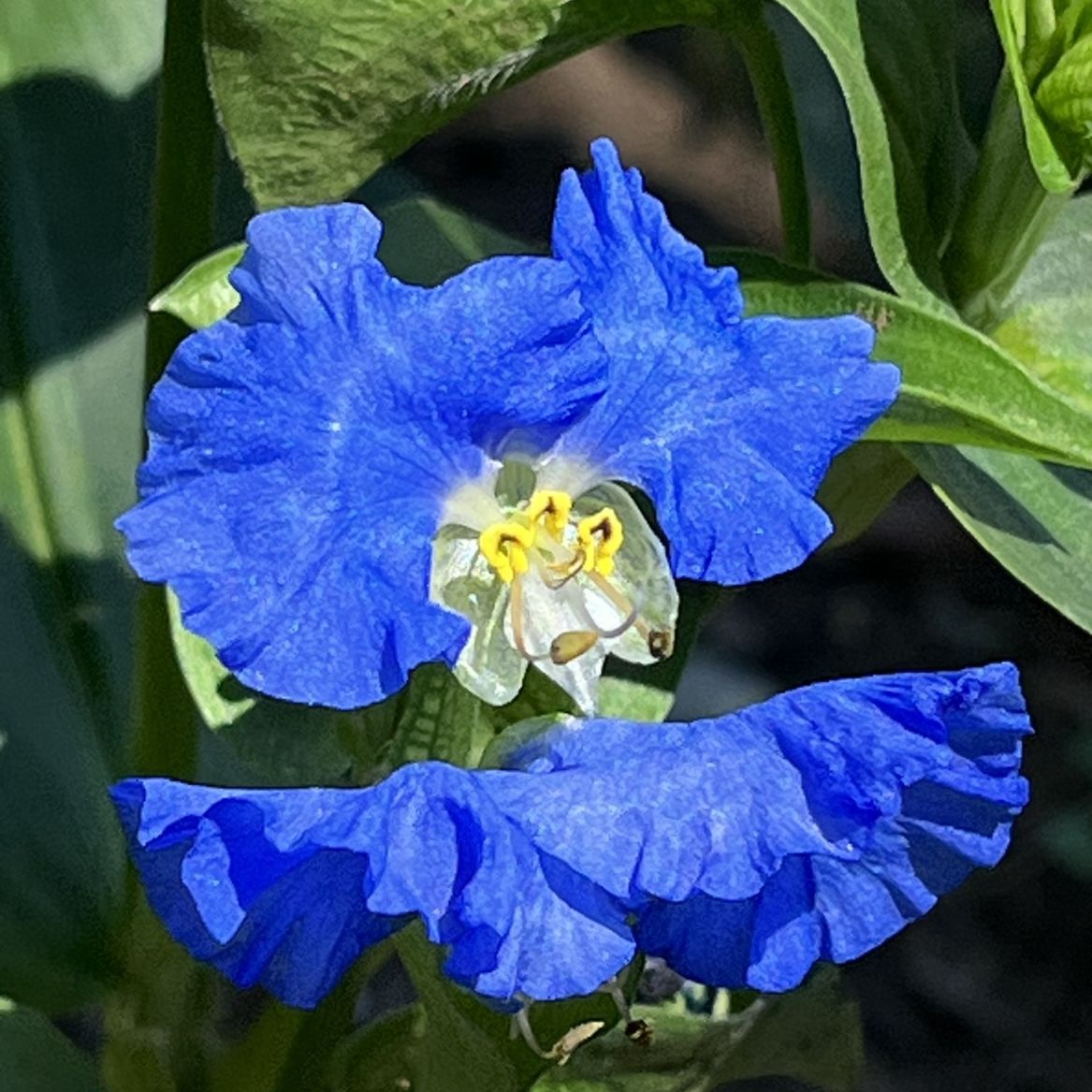オオボウシバナは、茎と葉の瑞々しい緑色、花被の澄んだ青色、控えめな白色、葯の鮮やかな黄色…。英名は「大きな露草」という意味です。
Large Commelina is captivating with its vibrant green stems and leaves, clear blue and subtly white perianths, and vibrant yellow anthers. It has no English name, so this is a tentative name.
【仮名】オオボウシバナ
【和名】大帽子花
【英名】Large Commelina, Giant Commelina
【学名】Commelina communis ‘Hortensis’
【誕生】07/ 28
【開花】06, 07, 08月
【花色】Blue
オオボウシバナ
オオボウシバナの概要
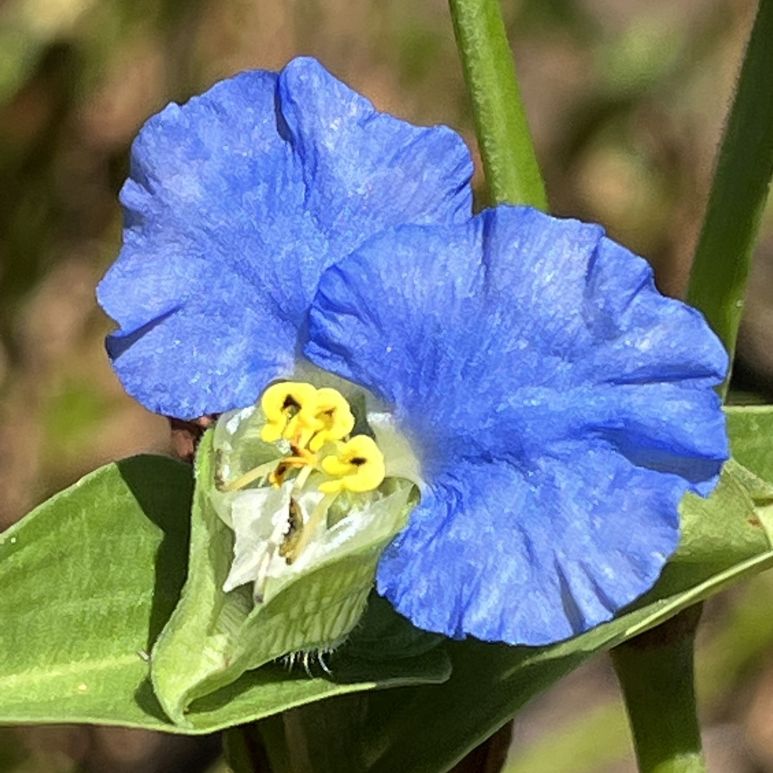
オオボウシバナはツユクサ科の一年草です。原産地は中国で、日本へは平安時代に渡来。江戸時代中期に琵琶湖の南岸周辺で染料用の栽培が拡がりました。茎と葉の瑞々しい緑色、花被の澄んだ青色、控えめな白色、葯の鮮やかな黄色…。英名は仮称で「大きな露草」という意味です。
オオボウシバナの名前
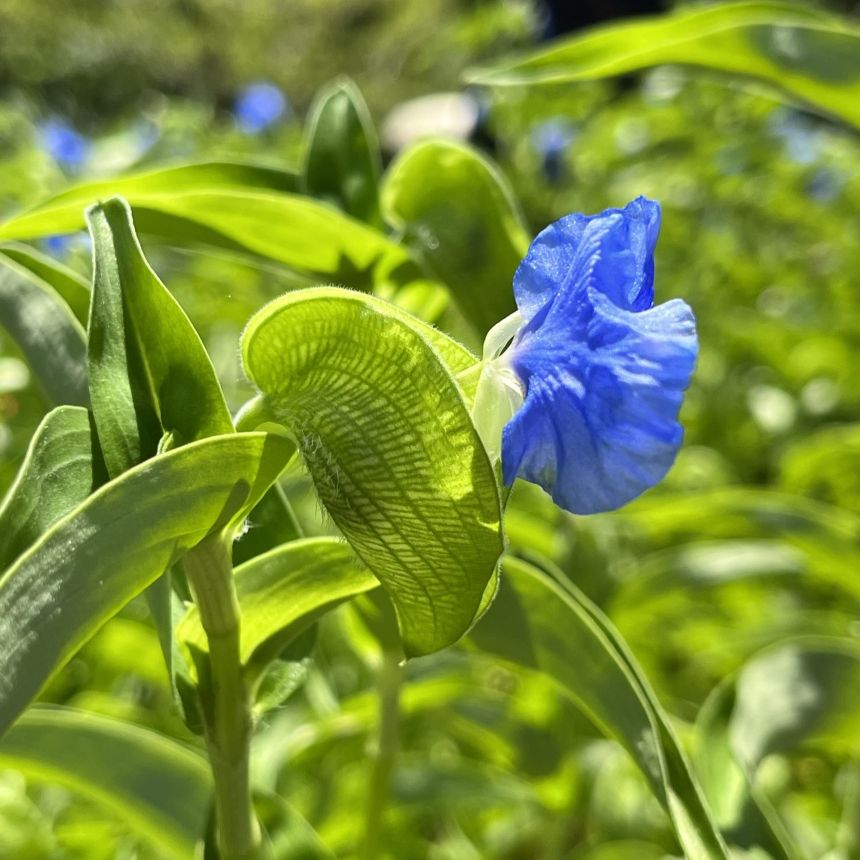
オオボウシバナは「大きな帽子花」という意味。帽子花は露草の別名で、苞が烏帽子のように見えるからです。ラテン語の属名コミメリナは17世紀のオランダの植物学者ヤン・コメリンへの献名。種小名コミュニスは「普通の」、栽培変種名ホルテンシスは「庭園の」という意味です。
オオボウシバナの姿形
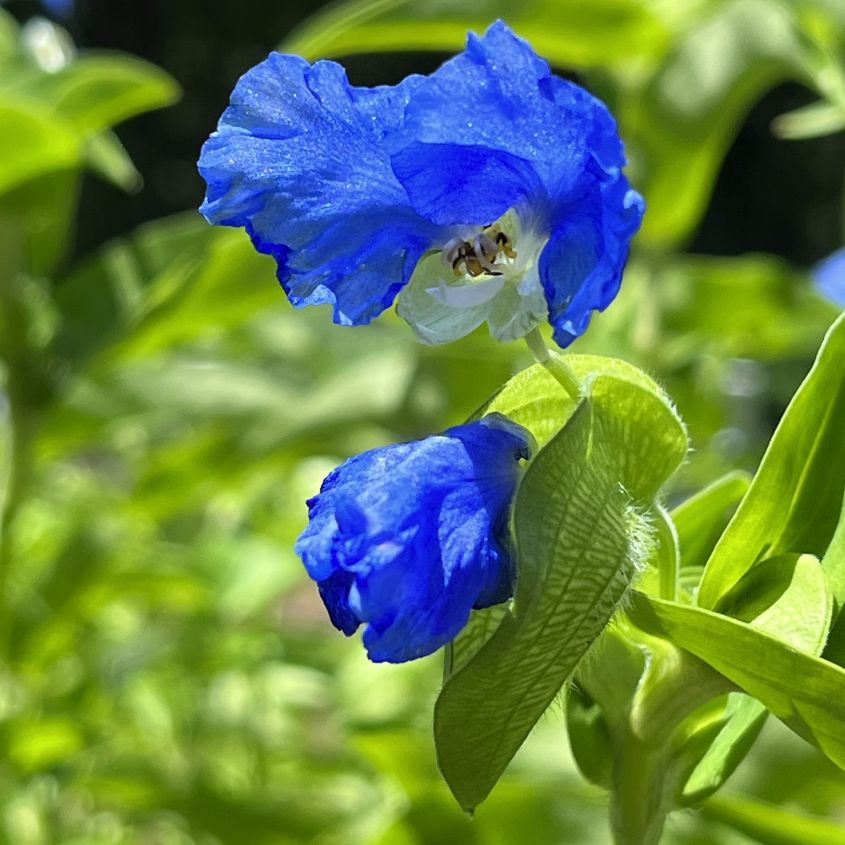
オオボウシバナの茎は太く、盛んに分岐。基部から細根が生え、節から不定根が生えます。葉は互生の卵状披針形。葉鞘が茎を抱きます。花は花弁が3枚、雄しべが6本、雌しべが3裂。朝から咲いて昼に萎れる一日花です。花後は蒴果を形成。熟すと割れて褐色の種子を落とします。
オオボウシバナの利用
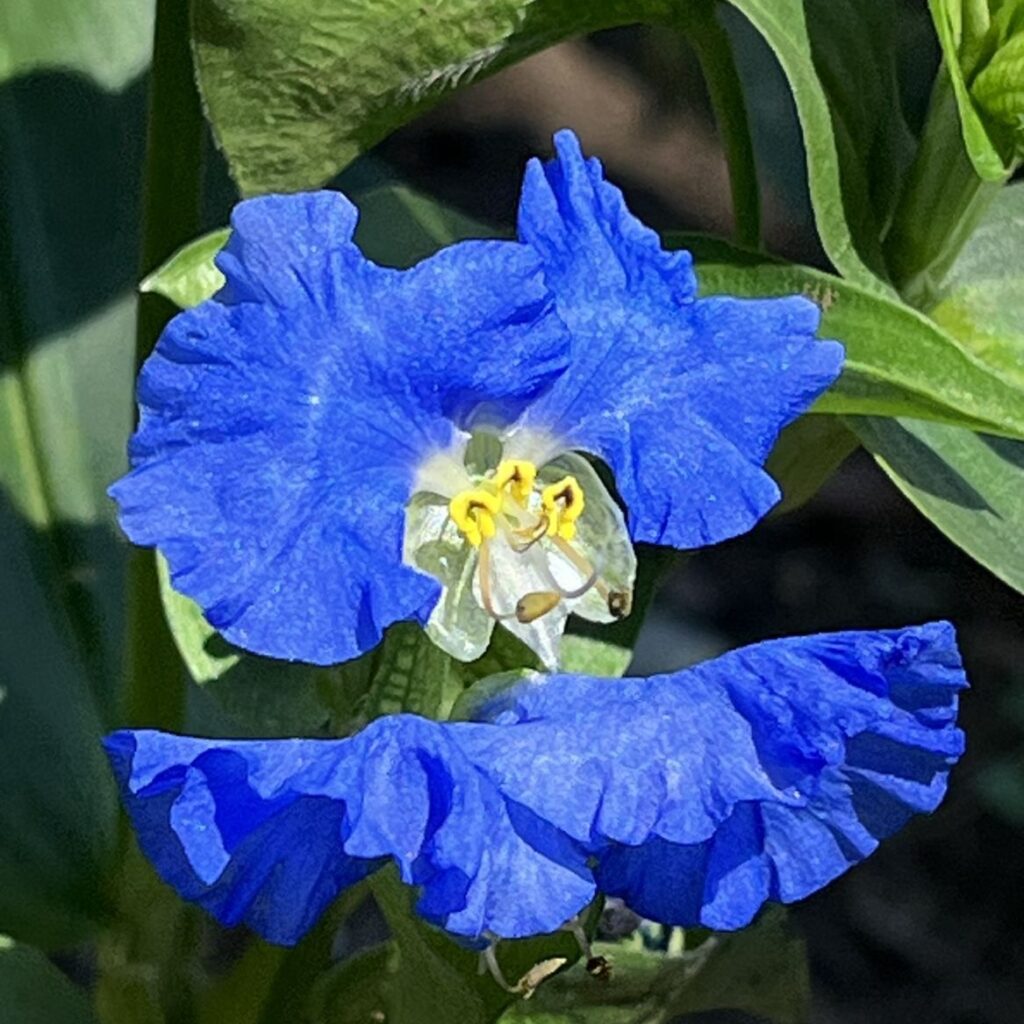
オオボウシバナは花色を和紙に染み込ませて「青花紙」に。描き心地がよく、水洗いで容易に色が落ちるため、友禅染や絞り染めで下絵を描くときに用いられます。一方、民間薬として解熱、利尿、消炎に服用、虫刺され、軽い炎症に外用。近年、血糖値抑制効果が注目されています。
Large Commelina
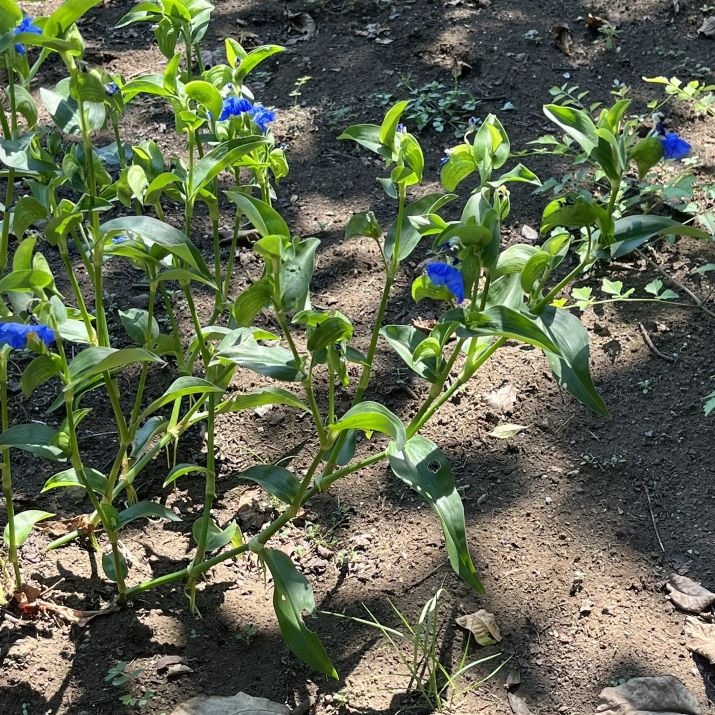
Large Commelina is an annual plant in the Commelinaceae family. Native to China, it was introduced to Japan during the Heian period. Cultivation for dye purposes spread around the southern shore of Lake Biwa in the mid-Edo period. It is captivating with its vibrant green stems and leaves, clear blue and subtly white perianths, and vibrant yellow anthers. It has no English name, so this is a tentative name.
The Japanese name for Large Commelina means “large hat flower.” Hat flower is another name for the dew grass, whose bracts resemble a hat. The Latin genus name, Commelina, is a tribute to the 17th-century Dutch botanist Jan Commelin. The specific epithet, communis, means “common,” and the cultivated variety, Hortensis, means “garden.”
Large Commelina has thick, vigorously branching stems. Rootlets grow from the base of the stem, and adventitious roots arise from the nodes. The leaves are alternate and ovate-lanceolate. Leaf sheaths clasp the stem. The flowers have three petals, six stamens, and a three-lobed pistil. They bloom in the morning and wilt by midday. After flowering, a capsule forms, which splits open and drops brown seeds upon ripening.
Large Commelina’s blue flowers are infused into washi paper, making it “Aobana paper.” Aobana paper, a blue dye, is pleasant to draw on and easily washes off with water, making it ideal for sketching designs in Yuzen and shibori dyeing. It is also used as a folk remedy for fever reduction, diuresis, and inflammation, and is applied externally to insect bites and mild inflammation. In recent years, its blood sugar suppressing effect has been attracting attention.

